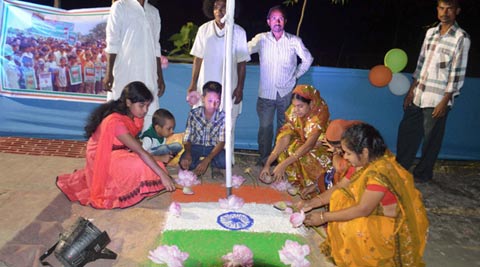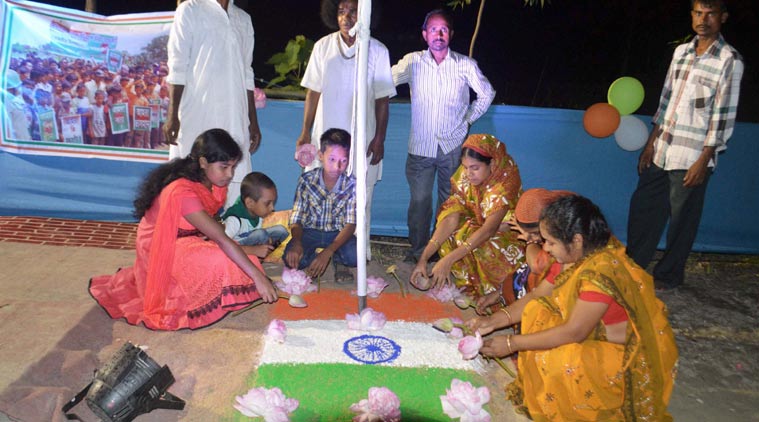Opinion Mapping the future
India and Bangladesh bury a Partition legacy. Now, both countries must focus on trade and connectivity
 People of Mashal Danga Enclave celebrate with tricolor rangoli near India- Bangladesh border in Cooch Behar District of West Bengal, as India and Bangladesh exchange 162 adversely-held enclaves on Friday midnight. (Source: PTI Photo)
People of Mashal Danga Enclave celebrate with tricolor rangoli near India- Bangladesh border in Cooch Behar District of West Bengal, as India and Bangladesh exchange 162 adversely-held enclaves on Friday midnight. (Source: PTI Photo)  People of Mashal Danga Enclave celebrate with tricolor rangoli near India- Bangladesh border in Cooch Behar District of West Bengal, as India and Bangladesh exchange 162 adversely-held enclaves on Friday midnight. (Source: PTI Photo)
People of Mashal Danga Enclave celebrate with tricolor rangoli near India- Bangladesh border in Cooch Behar District of West Bengal, as India and Bangladesh exchange 162 adversely-held enclaves on Friday midnight. (Source: PTI Photo)
The maps of India and Bangladesh were redrawn in the quiet of the night of July 31, much to the relief of the over 50,000 near-stateless persons living in 162 enclaves in the two countries. Unlike in 1947 or 1971, bloodshed didn’t mark the making of the new borders. Nor has it involved the transfer of large populations. The peaceful transfer of land between neighbours is a significant triumph for diplomacy in the region. The governments in Dhaka and New Delhi can justifiably claim credit for burying a legacy of Partition that had been kept alive by self-serving politicians in the name of nationalism.
[related-post]
For the residents of the enclaves, the settlement will help realise the full meaning of citizenship. They will now be able to access public services of their country — electricity, schools, hospitals, drinking water — without having to negotiate the border bureaucracy. But the larger import of the land transfer goes beyond addressing the needs of a small population. The goodwill unleashed by the settlement should drive the two governments to take bilateral relations to the next level. Trade and transnational connectivity issues must receive more attention. The sharing of rivers has been a sensitive matter in both countries, especially in India, where state governments are not always on the same page as the Centre on the matter. A radical rethink that approaches rivers as transnational waterways that connect people, facilitate agriculture, trade and economic growth in the region, rather than as limiting markers of regional interest, could help overcome the impasse in water-sharing disputes. Rivers are the lifeline of the region. Sensitive management of watersheds would be crucial to the prosperity of the millions who live in river basins in both countries. The Land Boundary Agreement signed during Prime Minister Narendra Modi’s Dhaka visit in June was possible because his party reversed its earlier position on the issue and the government could forge a national consensus. This recalibration of national interest centred on better economic integration of the region shows the way forward.
Vexed issues like smuggling, illegal migration and trafficking remain. Better coordination between border forces, improved intelligence-sharing and a flexible approach in both capitals could help the two governments remove these irritants. The economic transformation of the region, including India’s Northeast, could set to rest the real and imagined fears of migration and resource transfer.



